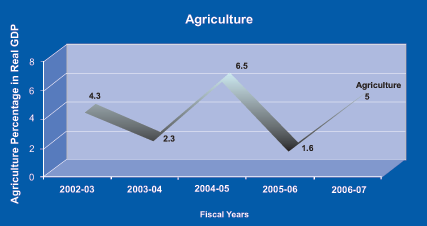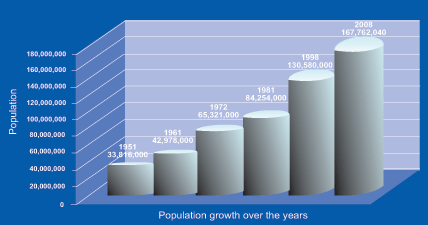The World Bank estimates that, as of 2008 (2004 statistics), there are about 982 million poor people in developing countries who live on US$ 1 a day or less (World Bank, Understanding Poverty, Chen 2004). The most recent United Nations Food and Agriculture Organization (FAO) estimate states that 854 million people worldwide are undernourished. This is 12.6 percent of the estimated world population of 6.6 billion. Most of the undernourished -820 million- are in developing countries. Undernutrition plays a role in at least half of all child deaths each year, worldwide.
A fundamental question that needs to be asked is, why is it important for the corporate sector to be concerned about the startling facts on poverty and hunger.
Hunger and its Implications
The Food and Agriculture Organization of the United Nations in its report ‘The State of Food Insecurity in the World’ states:
“In economic terms the case is more complex but no less cogent. Every child whose physical and mental development is stunted by hunger and malnutrition stands to lose 5 to 10 percent in lifetime earnings. On a global scale, every year that hunger persists at current levels causes deaths and disability that will cost developing countries future productivity with a present discounted value of US 500 billion, or more.”
Hunger and malnutrition inflict heavy costs on individuals, communities and nations. ‘The State of Food Insecurity in the World’ report also identified that deficiencies and the lack of essential vitamins and minerals cost more than 5 million children their lives each year. It costs households in the developing world more than 220 million years of productive life from family members whose lives are cut short or impaired by disabilities due to malnutrition. The far-arching implications of hunger cost developing countries billions of dollars in lost productivity.
Every child whose physical and mental development is stunted by hunger and malnutrition stands to lose 5 to 10 percent in lifetime earnings
Manifestations of the poverty virus are not just limited to the immediate effecters but the overall economy of the country and the business sector can never separate itself from such a stark reality.
Why Businesses Must Take Action
One might argue that “the business of business is business” – but then this is precisely what gives corporations the capability and credibility to expand their economic opportunity. According to the Corporate Watch survey, out of the world’s 100 largest economies, 51 are now global corporations. Only 49 are countries.
Ironically, instead of creating uniformity of access, opportunity and choice, the top 200 corporations are creating what some might call a global economic apartheid – and not a global village.
The biggest national and multinational banks vow in their TV commercials of easy access loans, 24/7 service and fuss free processes. Yet, these banks only serve the documented and bankable population of Pakistan where for a small investor getting a loan from the bank is nothing short of winning a battle. Even if we look at the statistics provided by the government, based on Pakistan’s current population of an estimated 160 million, 24 percent translates into more than 38 million people living below the poverty line. However, independent analysts, claim that the poverty level has not decreased and that the number of people living below the poverty line is still about 34 percent, according to a recent news story in The News.
Looking at these statistics and Pakistan’s profile as a predominantly agrarian economy, it follows that agriculture should be the focus of the economic policy makers. Regrettably, agriculture has had a zigzag history in our real GDP contributions.
In a country of Pakistan’s size where population growth has maintained a steady upward stream, feeding people is an uphill task – especially analyzing the government’s economic policy, geared towards bringing quick money into the market.
As can be seen in the graph below, Pakistan’s population growth rate, according to the Federal Bureau of Statistics, Planning and Development Division, is 1.8 percent and in comparison, the production of wheat and rice has grown 1 percent or less since 2002. With this scale of the problem, the need is to adopt meaningful commensurate strategies. Otherwise, reducing food insecurity will run the risk of becoming mere tokenism, with only a few showpiece projects to show for the effort.
The World Hunger Series report by the United Nations World Food Programme establishes the relationship between hunger and learning in shaping economic growth. Research by the UN in this report shows that improved nutrition leads to a more productive workforce with higher levels of talent and skills leading to economic development.
Nevertheless, it is important to realize that the government, without the support of the private sector and citizens, can at best be only a policy-making authority. The need is to address the requirements of small-scale farmers, by increasing their access to land and natural resources. Also, for the corporate sector, especially the food, beverage, fertilizers and pharmaceutical sectors, the issue of food insecurity, poverty and hunger can actually serve as an untapped market. Innovation technology usage and a ‘pro-poor’ approach can increase their productivity and sales, while accelerating economic growth in the country, particularly at the bottom of the income pyramid.
The Business Case of Hunger: Expanding Sustainable Opportunities
Large firms and their partners can play an important role in expanding economic opportunity in multiple forms.
The emerging Indian retail giant, Reliance, is a working example of a successful business model based on triple bottom line (TBL) value creation.
Reliance is tapping into the country’s own rural agricultural supply chain to provide quality food for its stores. Reliance has built an inclusive business model that creates a close link with the supply chain of poor farmers, and it procures produce directly from thousands of farmers in villages within a 15-kilometre radius of their collection centres. Reliance trains farmers to produce goods according to certain standards and requirements, reduce loss and spoilage and guarantees purchase of all produce delivered. Access to information and fair price has improved farmers’ yield and reduced wastage.
The polarization of profit and not-for-profit has been much of a handicap, leading us to conveniently overlook business opportunities through collaborative initiatives. Fortunately, however it is now being better understood by both the sides that multi-pronged partnerships create a win-win situation, for all parties.
The Famous Pakistani Example
The United Nations Development Programme (UNDP) gender support initiative known as Community Empowerment through Livestock Development & Credit (CELDAC) is a prime example in Pakistan of collaboration across Government, Aid Agency and Corporate sectors. Nestlé and Engro Foods, a local Pakistani company, serve as implementation partners in Punjab and Sindh respectively for the CELDAC project.
How and Why It Works
Since farm animals are mostly cared for by women, who often lack training in livestock management, together, these two competitors established the country’s largest milk collection network. In collaboration with the University of Veterinary Sciences, they have developed a one month, hands-on training curriculum and certification programme on basic animal health. They have trained over 800 women, of which 70 percent of the graduates are independent entrepreneurs delivering animal health services in their villages and have added an additional Rs. 2,000 – 3,000 to their family incomes. The increased capacity of the human workforce with the corporate sector’s management skills has linked rural development in the affected villages to market mechanisms, which makes the supply and demand of milk less volatile and of good quality.
The Acumen Fund has also been working in developing and underdeveloped countries to change the ad-hoc models of dependence to market-driven, sustainable entrepreneurial approaches. Their investment in a MicroDrip project for instance is creating a new market for poor farmers to leverage technical innovation and add to the development of their region. They have successfully applied their entrepreneurial fund-based investments to create ‘Khuda ki Basti’ models that provide housing and infrastructure for the slum dwellers through investment in Mr. Tasneem Siddiqui’s social enterprise, Saiban.
In order to be sustainable it is critical that targeted interventions are made in the area of nutrition by food and pharmaceutical companies and cycles of good nutrition are created through involvement of the communities
Lessons Learned
Many successful case studies are useful for us to take lessons from, replicate and improvise to achieve developmental objectives. It is critical that children are provided food as early as possible because undernourishment is most damaging at that age.
In order to be sustainable it is critical that targeted interventions are made in the area of nutrition by food and pharmaceutical companies and cycles of good nutrition are created through involvement of the communities.
The Danone-Grameen partnership in Bangladesh has developed a network of local rural micro dairy farmers to produce and market yoghurt in poor communities which is then distributed door to door by the ‘Grameen Ladies’. Another set of companies have created small sachets of fortified foods which are within the purchasing power of the poor.
In a nutshell, creating business delivery models that are physically and economically accessible; investments that are continuous in their approach to providing adequate food or means to its acquisition; and visionary leaders who recognize that returns come over a long period, are the key to sustainable development.
The time to act, is now. Or rather was yesterday – everyday 900 people die of poverty-related causes in Pakistan, according to
Mr. Siddique Sheikh, Chairperson of Federation of Pakistani Chambers of Commerce and Industry’s Standing Committee on CSR. Everyday that we delay, we are nine hundred lives too late.







